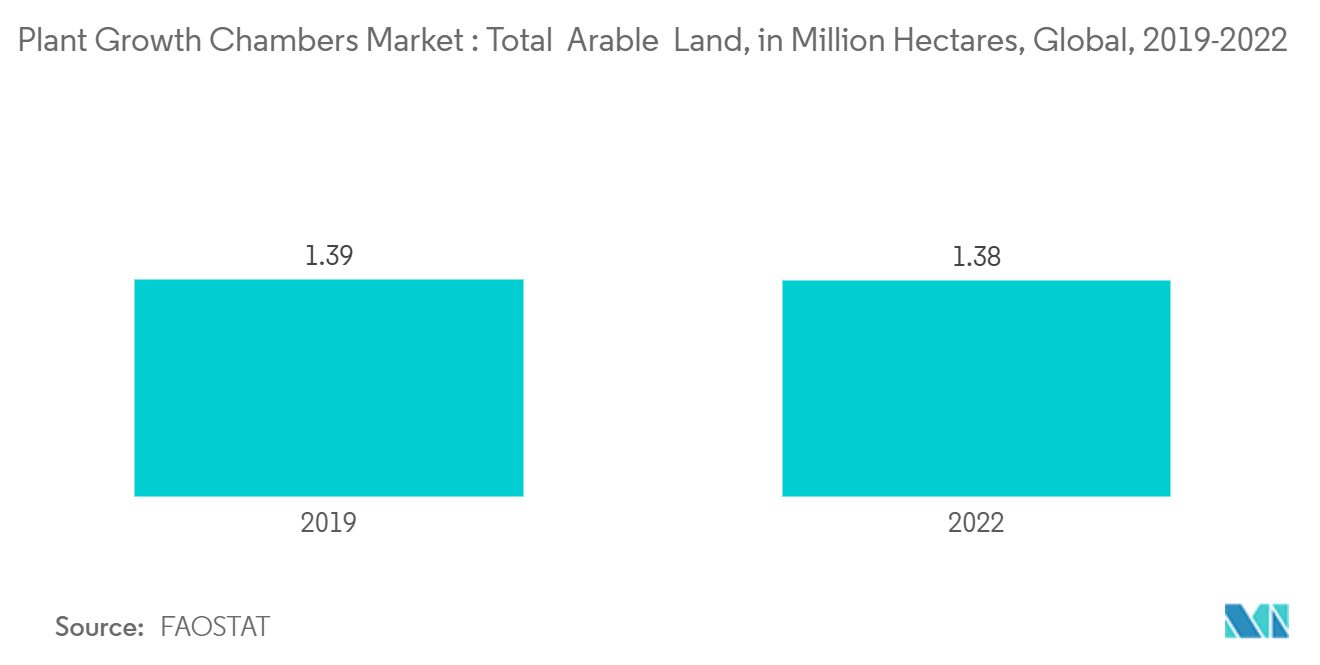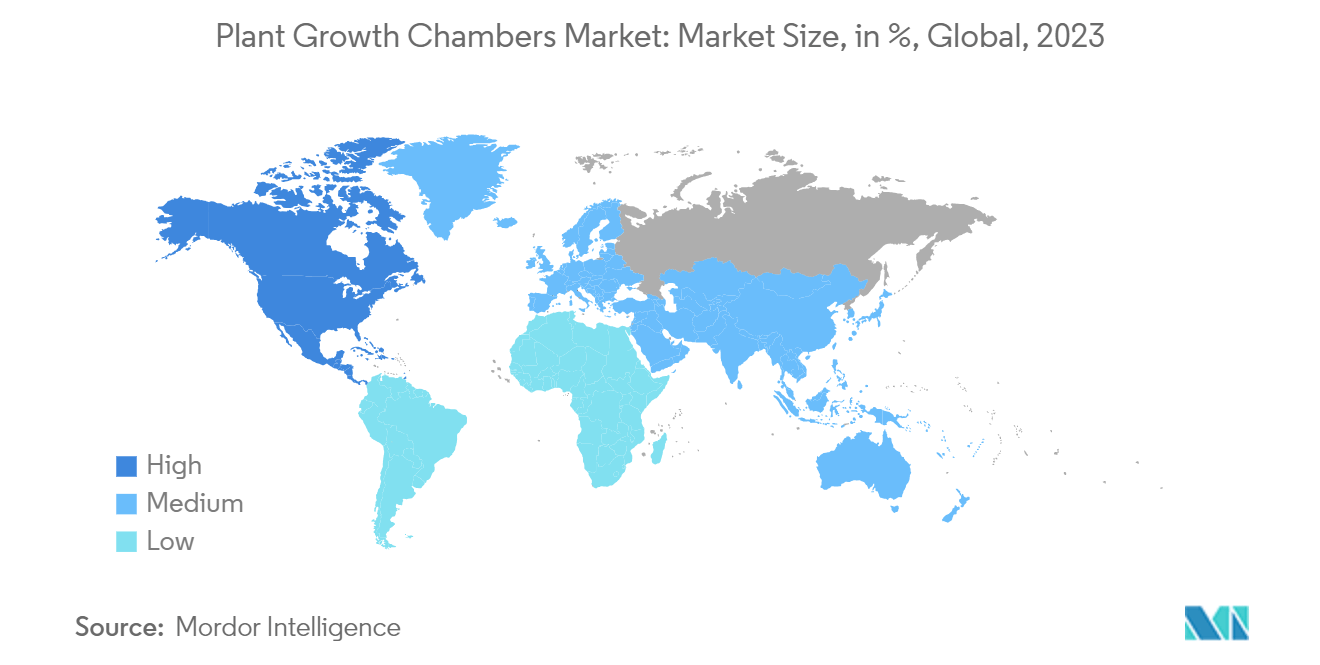Market Trends of Plant Growth Chambers Industry
Rising Food Demand and Shrinking Arable Land Propel Reach-in Equipment Demand
The need to feed an ever-growing global population, coupled with increasing demand for sustainable agricultural practices, fueled a significant rise in demand for plant growth chambers across the world. According to FAO, agricultural production is anticipated to grow two-fold over the coming 36 years, to meet the demands of a population of 9 billion. The need to produce a larger quantity of food is fueling the demand for new innovative technologies for sustainable crop production. Thus, there is broader acceptance and recognition of the increasing benefits of plant growth Reach-in equipment in developed and developing countries.
Additionally, with the amount of arable land per person declining and the population expanding, global crop yields must increase to meet food production needs. According to the World Bank statistics, in South Asia, there was a decline in the agricultural land percentage of the total land, from 56.8% in 2020 to 56.7% in 2021. Also, as per FAOSTAT, the total global arable land accounted for 1.39 million hectares in the year 2019 decreased to 1.38 million hectares during the year 2022. Thus, with decreasing arable land, the global agriculture industry is looking for more convenient ways to produce various agricultural goods and a plant growth chamber is one of the alternatives that is also convenient to use.

North America Dominates the Market
North America is one of the largest markets for plant growth chambers in the world, with countries, like the United States, Canada, and Mexico, demonstrating massive adoption of incubators for controlled and sustainable plant growth. This is largely attributed to the declining arable land, which spurred the demand for plant growth chambers in the United States and other countries. These chambers are significantly utilized in the region to avoid disturbances in the continuous supply of food and to develop innovative and quality plants that are free of diseases. The presence of major companies, such as Thermo Fisher, Caron, and Conviron is majorly contributing to the growth of the market in this region.
Additionally, the rise in the use of plant growth chambers in academic research organizations and cosmetic industries is another key factor propelling the demand for plant growth chambers in the region. According to the International Society for Horticultural Sciences, there are nearly over 250 commercial plant laboratories in the United States with probably 50 more within the research units of agribusinesses. Moreover, new tissue culture laboratories are under progress in the country to undertake research activities, which, in turn, is creating a demand for plant growth chamber equipment.
Canada holds numerous sets of opportunities that embark on the possibility of scaling the production of foods using plant growth chambers over the near future as the need for healthy, fresh, and sustainable produce is increasing in the country. Alberta is one of the advanced provinces when it comes to adopting protected and indoor cultivation practices as well as carrying out various plant research activities. Tomatoes, cucumber, and peppers are the three main crops generally grown commercially in growth chambers in the province. Other commercial crops grown include lettuce, basil, arugula, eggplant, and snap beans, but typically on a much smaller scale.


